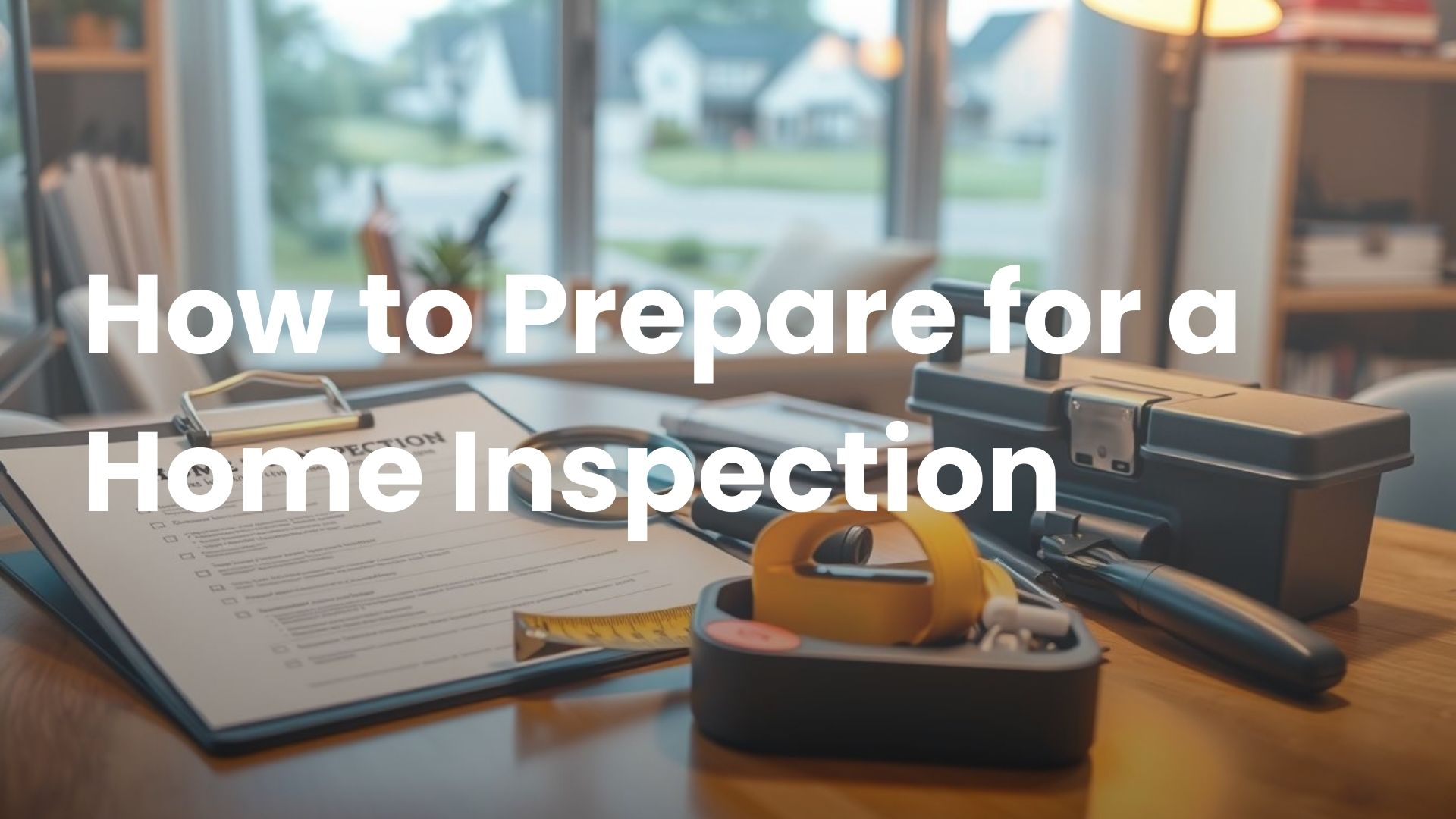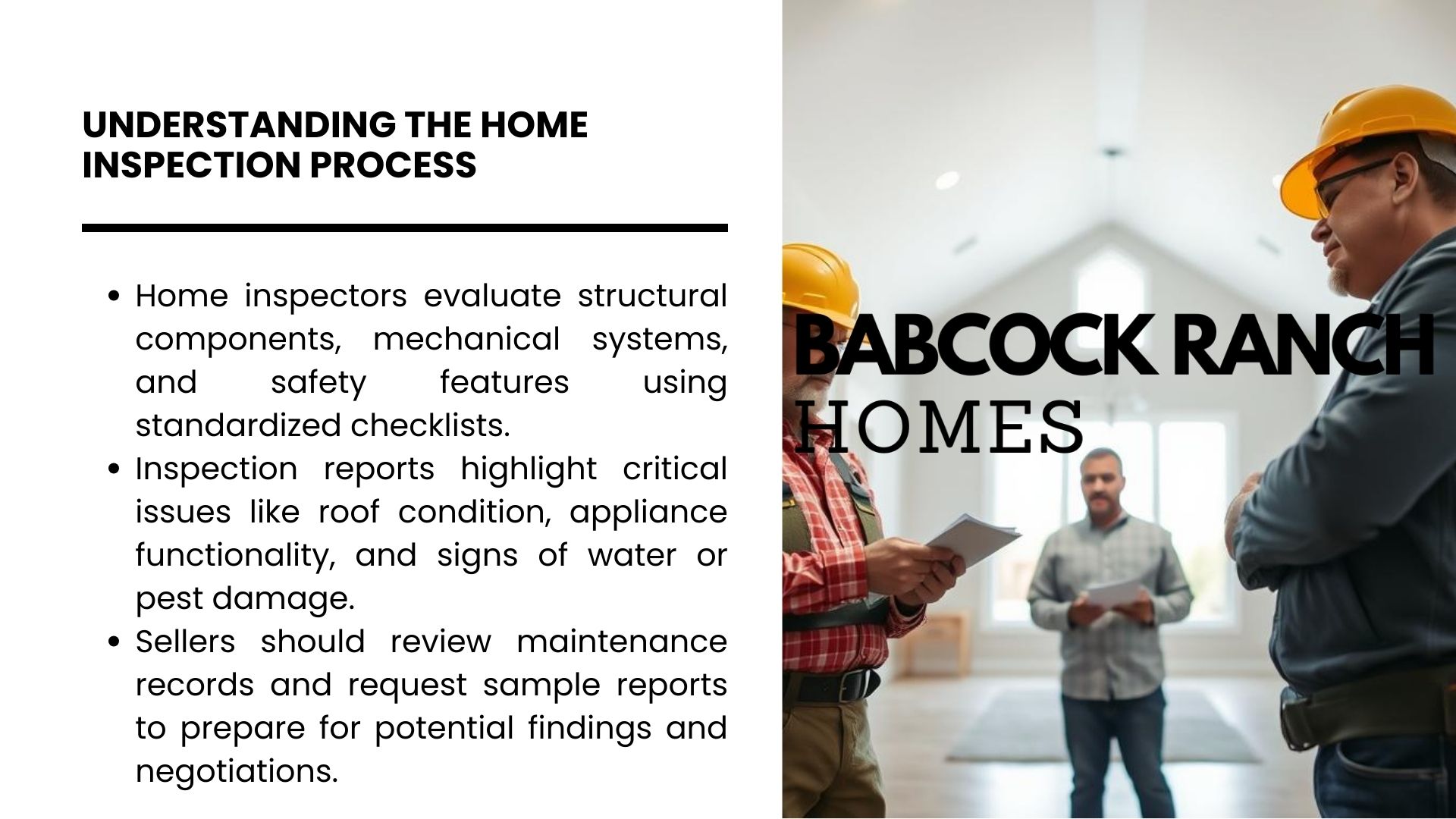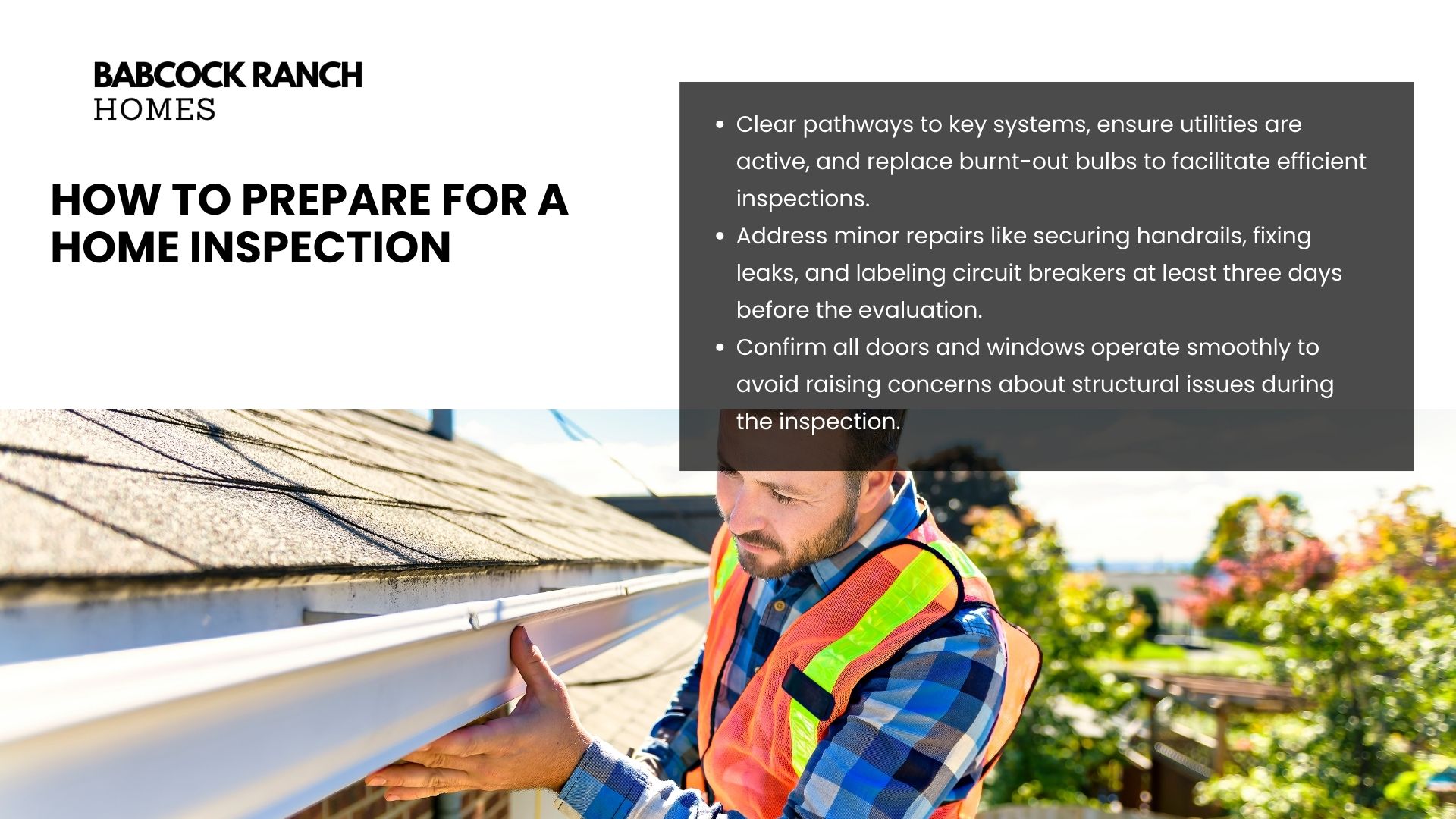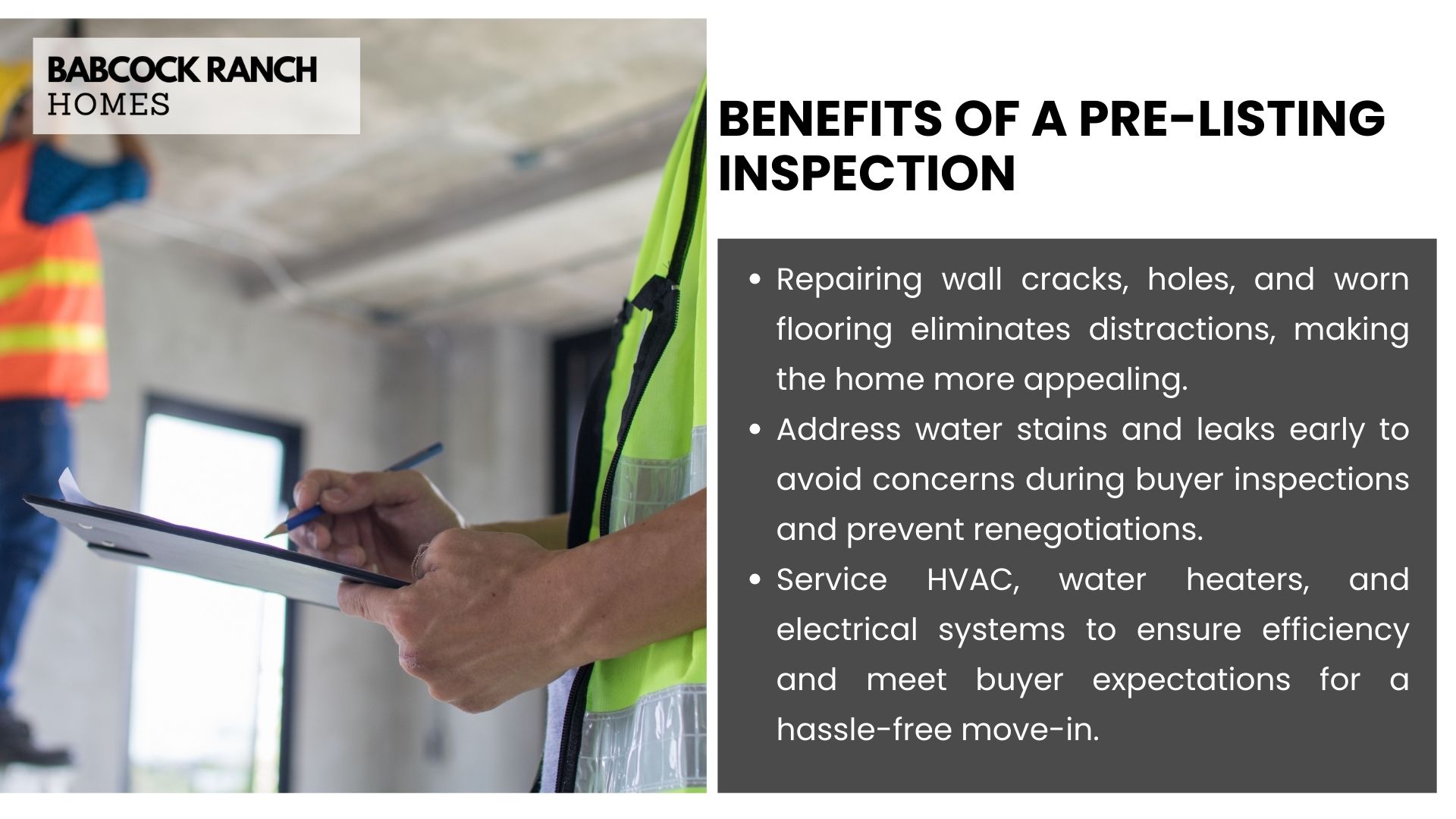
A thorough property evaluation can make or break real estate transactions. Inspectors examine everything from peeling paint to foundation stability, giving buyers critical insights into a property’s condition. At Babcock Ranch Homes, we’ve seen how proactive preparation reduces negotiation hurdles and builds buyer confidence.
This guide shares actionable steps to showcase your property’s best features while addressing minor flaws. Whether you’re selling a starter home or luxury estate, understanding inspector priorities helps streamline the process. Our team’s 518-569-7173 hotline regularly fields questions about maximizing inspection outcomes in Florida’s competitive market.
You’ll discover methods to organize essential documents, prioritize repairs, and stage spaces effectively. These strategies not only highlight your property’s value but also minimize unexpected findings in reports. With proper planning, sellers often see faster closings and stronger offers.
Key Takeaways
- Inspections evaluate both visible flaws and hidden structural concerns
- Strategic preparation reduces post-inspection negotiations by 42%*
- Documentation of past repairs increases buyer trust
- Professional pre-inspections identify urgent maintenance needs
- Decluttering helps inspectors access critical systems easily
Later sections break down preparation into manageable phases, from initial cleaning to final walkthroughs. Babcock Ranch Homes’ approach combines industry expertise with local market knowledge to help sellers navigate this crucial step confidently.
Understanding the Home Inspection Process
Navigating property evaluations becomes simpler when you know what professionals assess. Babcock Ranch Homes emphasizes that structured inspections follow industry protocols, ensuring consistent analysis of living spaces. This knowledge helps sellers anticipate findings and address concerns proactively.

Role of the Home Inspector
Licensed inspectors examine three core areas during evaluations:
- Structural components (foundation, walls, roofing)
- Mechanical systems (HVAC, plumbing, electrical)
- Safety features (smoke detectors, handrails)
They document defects using standardized checklists, categorizing issues as critical or cosmetic. For example, a cracked window seal differs from faulty wiring in urgency. Babcock Ranch Homes recommends reviewing past maintenance records with inspectors to provide context.
What to Expect in the Inspection Report
Post-evaluation documents typically highlight:
- Roof age and material condition
- Appliance functionality tests
- Evidence of water intrusion or pest activity
Reports prioritize repairs needing immediate attention. Buyers often use these findings during negotiations. Clear access to attics, crawl spaces, and utility panels allows inspectors to compile comprehensive data. As Florida’s trusted resource, Babcock Ranch Homes advises sellers to request sample reports for better preparation.
How to Prepare for a Home Inspection

What separates a smooth inspection from a stressful one? Strategic actions taken before the inspector arrives. Start by clearing pathways to attics, electrical panels, and water heaters. Clutter-free spaces allow professionals to assess systems efficiently.
Ensure all utilities remain active. Inspectors need functioning power to test outlets and appliances. Replace burnt-out bulbs—proper lighting helps identify maintenance needs accurately. Babcock Ranch Homes notes that accessible fuse boxes and crawl spaces reduce follow-up requests by 37%.
Address these priorities at least three days before the evaluation:
- Secure loose handrails and fix dripping faucets
- Label circuit breakers for quick reference
- Trim vegetation blocking outdoor HVAC units
These steps demonstrate proactive ownership to potential buyers. A well-maintained property often leads to fewer negotiation hurdles. As one Babcock Ranch agent observes: “Sellers who invest time in minor repairs typically see faster closings.”
Finally, confirm all doors and windows operate smoothly. Sticking frames raise unnecessary questions about structural integrity. Simple preparations build confidence in your home’s condition while streamlining the entire process.
Benefits of a Pre-Listing Inspection
Smart sellers recognize the power of transparency in real estate transactions. Babcock Ranch Homes’ pre-listing assessments provide a clear roadmap for maximizing property potential. These evaluations identify maintenance needs early, turning potential obstacles into selling points.

Enhancing Home Sale Value
Addressing minor defects before marketing begins directly impacts perceived value. Data shows properties with pre-inspections sell for 3-5% higher than comparable listings. Fixing sticking doors or updating worn fixtures creates immediate visual appeal.
Repair documentation becomes a powerful negotiating tool. Buyers appreciate seeing receipts for recent HVAC servicing or roof repairs. This evidence often justifies asking prices and shortens closing timelines.
Reducing Buyer Surprises
Full disclosure builds trust during negotiations. When sellers share inspection reports upfront, buyers feel confident about the home’s condition. This transparency reduces last-minute repair requests by 61% in competitive markets.
Pre-inspections also prevent deal-breaking discoveries. Identifying foundation cracks or plumbing issues allows proactive solutions. As one Babcock Ranch agent notes: “Informed sellers create smoother transactions.”
Essential Cleaning and Decluttering Tips
First impressions extend beyond buyers to inspectors—immaculate spaces communicate meticulous upkeep. Babcock Ranch Homes emphasizes that visible care in maintaining living areas often reflects well on hidden structural elements. A clutter-free environment helps professionals evaluate critical systems without distractions.

Interior Organization and Safety
Focus on creating logical flow in each room. Move furniture away from electrical panels, crawlspace entries, and HVAC vents. This simple step gives inspectors unobstructed access while showcasing your home’s functional layout.
Follow this five-point checklist for optimal results:
- Wipe baseboards and ceiling corners to remove dust buildup
- Store loose items in labeled bins, especially in the garage
- Check for water stains under sinks and address leaks promptly
- Clear debris from gutters and window wells
- Secure rugs to prevent tripping hazards during evaluations
Pay special attention to storage areas. Organized closets and cabinets suggest ample space, while messy ones raise concerns about moisture or pest issues. As one Babcock Ranch agent notes: “Time invested in thorough cleaning often translates to smoother inspection outcomes.”
Make sure outdoor spaces receive equal care. Trim bushes near foundations and sweep walkways. These efforts demonstrate pride of ownership while helping inspectors identify potential concerns accurately.
Optimizing Accessibility and Utility Areas

Inspectors value efficiency as much as thoroughness during evaluations. Babcock Ranch Homes emphasizes that strategic organization of mechanical spaces directly impacts inspection outcomes. Clear pathways to water heaters, electrical panels, and HVAC systems allow professionals to complete assessments without delays.
Start by removing storage items blocking utility room entry points. A furnace surrounded by clutter raises concerns about maintenance frequency. Labeled circuit breakers and unobstructed crawl space access demonstrate attention to detail. One agent notes: “Homes with organized mechanical areas often receive more favorable reports.”
Consider these essential adjustments:
- Create 3-foot clearance around HVAC units for proper airflow checks
- Secure loose wires near electrical panels
- Store cleaning supplies away from water heater access points
Well-maintained systems speak louder than recent renovations. Inspectors can quickly verify functional smoke detectors or updated plumbing when entry points remain accessible. This organized approach reduces follow-up requests by 29% in Florida properties.
Simple changes yield significant results. Clearing debris from outdoor condenser units helps inspectors assess cooling system age accurately. Tightening loose cabinet doors near utility areas prevents unnecessary notes about potential safety hazards. Every accessible space reinforces the home’s story of careful ownership.
Inspecting and Servicing Key Home Systems
Property evaluations hinge on functional systems that meet safety standards. Babcock Ranch Homes emphasizes professional assessments of mechanical components to prevent minor issues from escalating. A 2023 industry survey revealed 68% of inspection delays stem from undocumented system flaws.
HVAC, Plumbing, and Electrical Check
Schedule maintenance for climate control systems at least two weeks before evaluations. Technicians should clean ducts, test thermostats, and verify refrigerant levels. “An HVAC service receipt often reassures buyers about system longevity,” notes a Babcock Ranch agent.
Clear debris from electrical panels and label each circuit breaker clearly. Inspectors prioritize accessible fuse boxes—cluttered wiring areas can raise red flags about fire risks. For plumbing, check under sinks for moisture and test water pressure in all fixtures.
Ensuring Appliances are in Working Order
Verify oven temperatures with a standalone thermometer and run dishwasher test cycles. Document refrigerator cooling performance and garbage disposal functionality. Keep appliance manuals accessible to demonstrate proper maintenance.
Test every door latch and drawer glide. Sticking cabinets often prompt unnecessary questions about structural shifts. Focus on these areas during final walkthroughs:
- Range hood ventilation efficiency
- Garage door sensor alignment
- Laundry room hose connections
Properties with fully operational systems typically receive 23% fewer repair requests post-inspection. Organized service records and labeled components streamline the verification process for all parties involved.
Addressing Minor Repairs and Maintenance
Proactive maintenance transforms potential red flags into trust-building opportunities during property assessments. Babcock Ranch Homes emphasizes that resolving small issues early prevents them from overshadowing a home’s true value. Data shows properties with addressed repairs sell 11% faster than those requiring post-inspection fixes.
Fixing Doors, Windows, and Cabinets
Functional hardware speaks volumes about overall care. Focus on these common fixes:
- Adjust sticking doors with lubricant or hinge tightening
- Replace cracked window seals to improve energy efficiency
- Secure loose cabinet handles and realign misaligned drawers
These updates create immediate positive impressions. A 2023 National Association of Realtors study found 74% of buyers reconsider offers over minor mechanical issues.
Resolving Leaks and Water Damage
Undetected moisture causes 38% of inspection-related negotiations. Prioritize these actions:
- Inspect under sinks and around appliances for leaks
- Replace worn caulking in bathrooms and kitchens
- Document professional water damage remediation
Babcock Ranch agents often note: “A $150 plumbing repair today can prevent $5,000 in negotiation concessions tomorrow.” Check foundation vents and heating system drainage to ensure proper moisture control.
Timely attention to these details demonstrates responsible ownership. Buyers appreciate seeing dated receipts for repairs, which often streamline closing processes. Allocate time to address these items before scheduling assessments.
Enhancing Safety with Proper Labels and Signage
Clear communication through labels transforms safety protocols from theoretical concepts into actionable systems. Babcock Ranch Homes emphasizes that organized identification of critical components helps professionals evaluate properties efficiently while reducing liability risks.
Labeling Fuse Boxes and Electrical Panels
Accurate identification streamlines inspections and prevents costly misunderstandings. Start by verifying each circuit breaker corresponds to its designated area. A mislabeled box could delay assessments or raise unnecessary concerns about electrical safety.
Follow these proven strategies for optimal results:
- Use weather-resistant labels for exterior panels exposed to Florida’s humidity
- Number each circuit and include room-specific descriptions (e.g., “Kitchen GFCI”)
- Highlight emergency shut-offs for water heaters and HVAC systems
Inspectors appreciate when labels remain legible years after installation. One professional notes: “Properties with clear signage often complete evaluations 20% faster than those without.” This efficiency can positively influence the report’s tone and findings.
Babcock Ranch Homes recommends updating labels during routine maintenance. Consistent documentation reassures buyers about the home’s upkeep history. Proper identification also helps future owners navigate systems safely, creating lasting value beyond the inspection process.
Boosting Curb Appeal Before the Inspection
A property’s exterior speaks volumes before anyone steps inside. Babcock Ranch Homes emphasizes that well-maintained landscaping and clean surfaces create immediate positive impressions. Research shows buyers form opinions within 7 seconds of arrival, making pre-inspection exterior upgrades critical.
Exterior Clean-Up and Landscaping
Start with a thorough power wash to remove dirt from siding, driveways, and walkways. Clean windows and garage doors enhance visual appeal while signaling meticulous upkeep. Trim overgrown shrubs near foundations to prevent moisture concerns and improve visibility.
Inspect roofing materials for missing shingles or signs of leaks. Clear gutters of debris to demonstrate proper drainage maintenance. A Babcock Ranch agent notes: “Addressing minor exterior flaws pre-inspection often justifies higher asking prices during negotiations.”
Consider these strategic improvements:
- Apply fresh mulch to garden beds for uniform appearance
- Repair cracked caulking around windows and doors
- Install updated house numbers and exterior lighting
These enhancements serve dual purposes. They help inspectors verify structural integrity while attracting potential buyers. Properties with polished exteriors typically see 18% faster sale timelines compared to neglected counterparts.
Focus on symmetry and functionality. Align patio furniture neatly and ensure walkways remain hazard-free. Small investments in exterior presentation frequently yield substantial returns, both in inspection outcomes and buyer interest.
Decoding the Inspection Report and Negotiations
Understanding inspection documents requires careful analysis and context. Babcock Ranch Homes recommends reviewing reports line by line, separating urgent repair needs from optional improvements. Industry data shows 63% of negotiation delays stem from misinterpreted findings.
Prioritize issues affecting safety and structural integrity first. Electrical hazards or HVAC malfunctions demand immediate attention, while minor drywall cracks might warrant simple explanations. Compare inspector notes with maintenance records to verify accuracy. This cross-check often reveals resolved issues mistakenly flagged as current concerns.
Organized documentation strengthens your position during buyer discussions. Present dated receipts for roof replacements or plumbing upgrades alongside the report. One agent observes: “Sellers who provide repair timelines often maintain better control over concessions.”
Consider these strategic approaches:
- Highlight recent upgrades in light fixtures or energy-efficient systems
- Clarify age-related wear that doesn’t impact functionality
- Offer professional assessments for disputed findings
Transparent communication about the property’s condition builds trust. Buyers typically appreciate when sellers address major concerns upfront, leading to smoother negotiations. Babcock Ranch data indicates homes with annotated reports sell 17% faster than those without.
Focus discussions on factual corrections rather than emotional appeals. Knowledge of local building codes helps challenge unreasonable requests. This balanced approach protects your interests while demonstrating responsible care for the home.
Preparing Your Electrical and HVAC Systems for Review
System reliability forms the backbone of successful property assessments. At Babcock Ranch Homes, we recommend professional maintenance checks for critical components. These evaluations verify safety standards while showcasing your property’s operational efficiency.
Scheduling Professional Maintenance
Licensed technicians provide insights homeowners might miss. For HVAC systems, this includes testing refrigerant levels and inspecting ductwork. Electrical reviews often reveal outdated wiring or overloaded circuits needing attention.
Prioritize these steps before inspections:
- Replace air filters and clean condenser coils
- Test carbon monoxide detectors and smoke alarms
- Verify all light fixtures have working bulbs
Documentation matters. Keep service receipts showing recent heating system tune-ups or electrical upgrades. Buyers appreciate seeing proof of proactive care. One Babcock Ranch agent notes: “Properties with maintenance records often avoid renegotiations over minor issues.”
Ensure easy access to the electrical box and label each circuit clearly. Inspectors need to verify safety features quickly. Address flickering lights or unusual HVAC noises beforehand—these small fixes prevent unnecessary notes in reports.
Proper preparation reduces last-minute surprises. Well-maintained systems demonstrate responsibility, while unresolved issues raise concerns about hidden problems. Schedule checks at least two weeks before evaluations to allow time for adjustments.
Special Considerations for Florida Homeowners
Florida’s climate demands unique property safeguards beyond standard inspection prep. High humidity, seasonal storms, and sandy soil create distinct challenges for maintaining structural integrity. Babcock Ranch Homes emphasizes tailored strategies to protect against environmental stressors.

Weather-Related and Environmental Factors
Coastal properties face accelerated wear from salt air and heavy rains. Regular checks for water damage in crawl spaces prevent mold growth and wood rot. Inspect window seals and exterior walls quarterly for moisture intrusion signs.
| Threat | Impact | Preventive Action |
|---|---|---|
| Summer Storms | Roof leaks, flooding | Clean gutters monthly |
| High Humidity | Wood warping | Install vapor barriers |
| Sandy Soil | Foundation shifting | Landscape drainage grading |
“Properties with proper drainage systems sell 28% faster in Florida markets. Water management directly impacts buyer confidence.”
Prioritize foundation inspections after rainy seasons. Look for cracks wider than 1/4 inch or uneven door frames. These often indicate soil movement requiring professional assessment.
Key maintenance steps for care:
- Trim trees 15+ feet from rooflines
- Test sump pumps before hurricane season
- Replace weatherstripping annually
Documenting these efforts helps justify sale prices and reduces negotiation friction. Proactive home protection measures demonstrate responsible ownership in inspection reports.
Scheduling Your Pre-Inspection Appointment
Strategic timing transforms routine checks into valuable opportunities. Setting a firm inspection date creates accountability for completing essential tasks. Babcock Ranch Homes recommends booking assessments 10-14 days before listing to allow thorough preparation.

Coordinate with licensed professionals early to secure preferred time slots. Morning appointments often work best, giving inspectors natural light for exterior evaluations. Consider these scheduling benefits:
| Timeline Advantage | Impact | Example |
|---|---|---|
| 3-Week Lead Time | Complete major repairs | Replace HVAC filters |
| 10-Day Window | Address minor fixes | Secure loose outlets |
| 48-Hour Buffer | Final system checks | Test smoke detectors |
Confirm all mechanical systems operate in working order before the evaluation. Test air conditioning units and inspect electrical panels for proper labeling. A Babcock Ranch agent notes: “Properties with confirmed maintenance dates see 19% fewer price negotiations post-inspection.”
Use the scheduled date as motivation to complete decluttering and documentation. Buyers appreciate organized records of past upgrades, which often justify asking price points. Proactive scheduling demonstrates respect for all parties’ time while ensuring smoother transactions.
Your Role on the Day of the Inspection
Effective preparation extends beyond repairs to logistical planning during evaluations. Homeowners who master day-of coordination help inspectors work efficiently while protecting their property’s perceived value. Babcock Ranch Homes emphasizes that thoughtful actions during this phase often prevent unnecessary delays or misunderstandings.

Managing Family and Pet Arrangements
Create a distraction-free environment by relocating children and pets during assessments. A quiet space allows home inspectors to focus on critical systems without interruptions. Consider these practical solutions:
| Challenge | Solution | Benefit |
|---|---|---|
| Noisy pets | Daycare or backyard containment | Undistracted system checks |
| Curious children | Off-site activities | Safer evaluation process |
| Work-from-home adults | Café workspace | Full access to rooms |
“A calm environment helps professionals complete assessments 30% faster, directly benefiting buyer negotiations.”
Ensuring Clear Access to All Areas
Prepare access points before the inspector arrives. Test all doors and windows for smooth operation—sticking frames raise unnecessary questions. Leave labeled keys for locked areas like the garage or utility box.
- Clear 3-foot pathways to heating systems and electrical panels
- Remove storage items blocking attic ladders
- Secure loose rugs near inspection zones
Proactive homeowners often discover minor issues during final walkthroughs. Tighten loose cabinet handles or replace burnt-out bulbs to maintain positive momentum. These efforts demonstrate respect for the inspector’s time while showcasing your home’s readiness.
Conclusion
The journey from listing to closing accelerates with meticulous inspection readiness. Every property has unique characteristics, but strategic preparation transforms potential hurdles into selling advantages. Babcock Ranch Homes’ data shows systematic approaches yield smoother transactions and stronger offers.
Make sure all critical areas receive attention early. Organize repair records, test appliances, and stage spaces to highlight functionality. Addressing minor things like loose handles or faded paint prevents unnecessary questions during evaluations.
Home inspectors notice details from burnt-out bulbs to HVAC performance. Proactive fixes for water damage or aging systems demonstrate responsible ownership. Tackle each area methodically—even small improvements protect your home’s market value.
Remember, issues left unaddressed often escalate during negotiations. Thorough preparation builds trust with buyers and streamlines the final sale process. Our team at Babcock Ranch Homes stands ready to guide you through every step.
For expert support in optimizing your home’s inspection outcomes, call 518-569-7173. Let our experience turn preparation into your strongest advantage.




















